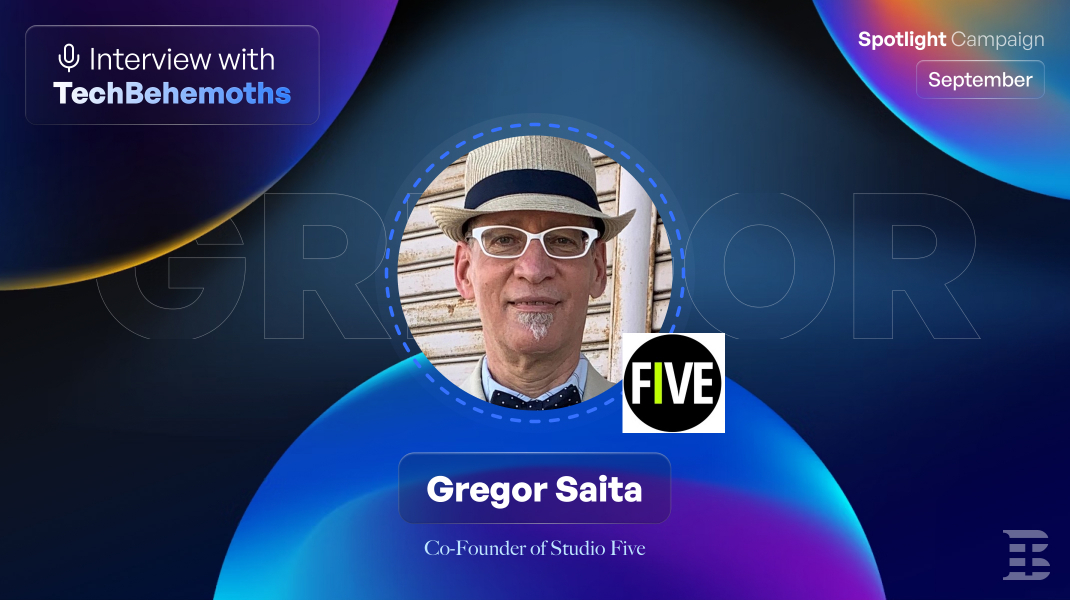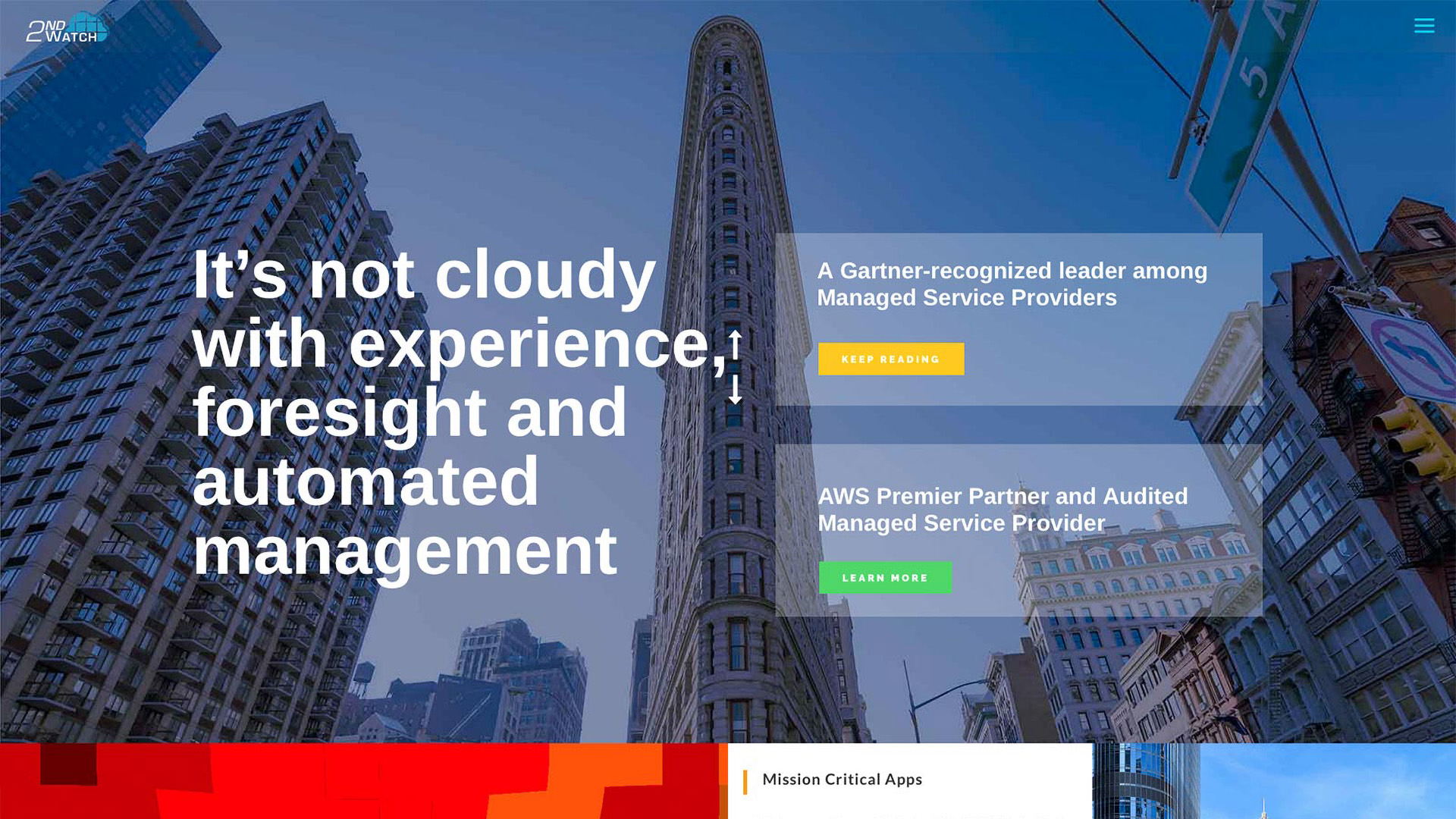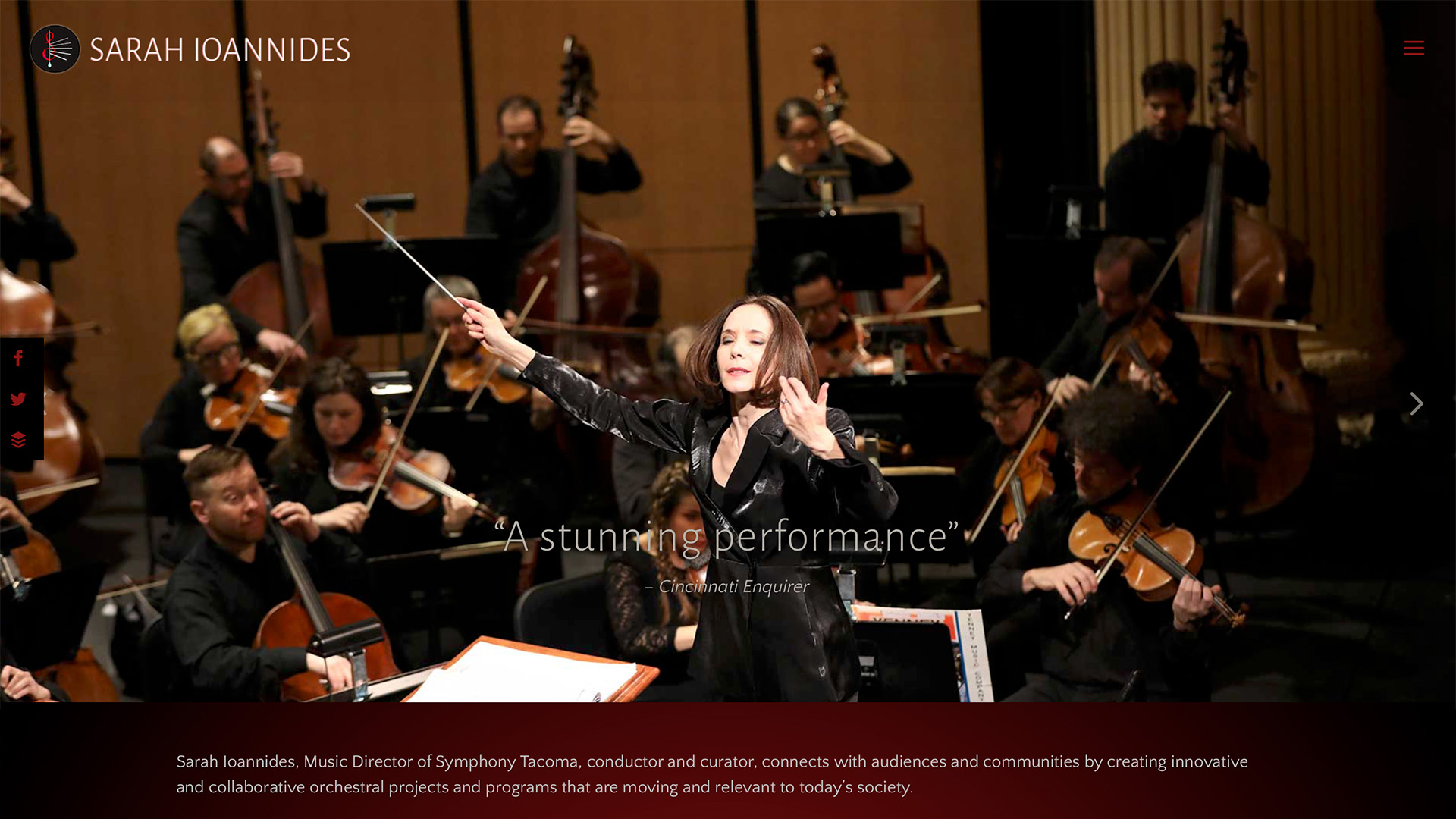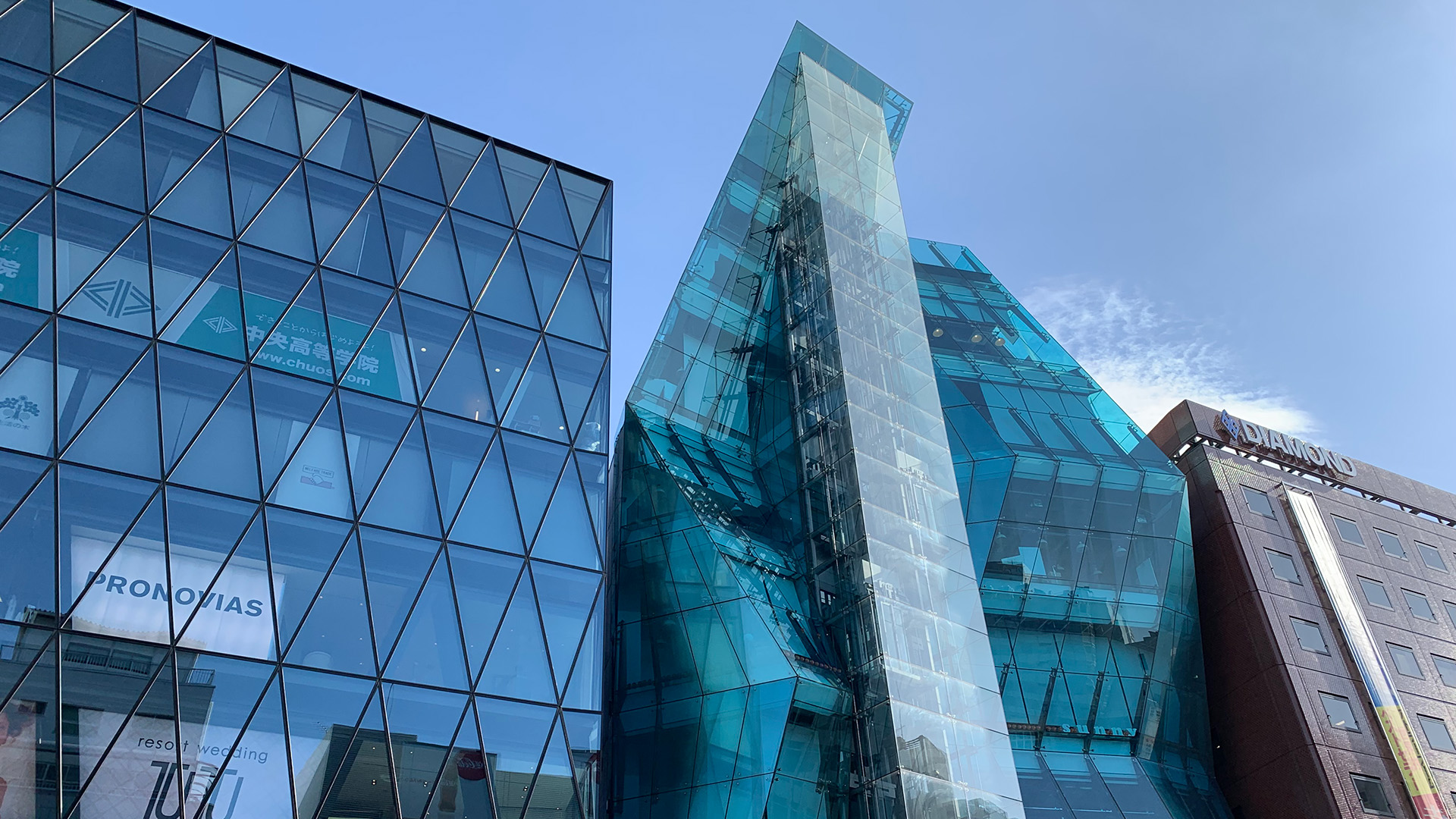Interview with Gregor Saita, Co-Founder of Studio Five

Summary
Gregor Saita, Co-Founder of Studio Five, brings over 25 years of experience in design, UX, and AI strategy. From his early days in publishing and photography to building award-winning digital solutions, Gregor has blended creativity and technology across three continents.
Today, Studio Five stands out as a multinational agency connecting the US and Japan, known for multilingual WordPress and e-commerce projects that merge bold design with smart strategy. In this interview, Gregor shares his journey, the evolution from PixoLabo to Studio Five, and his vision for the future of cross-cultural, AI-driven digital experiences.
Welcome to this exclusive interview with Gregor Saita, Co-Founder of Studio Five, a multinational web design agency bridging the US and Japan. Gregor brings over 25 years of experience in design, UX, and AI strategy, with a career spanning publishing, global agencies, and award-winning digital solutions.
Studio Five has built a strong reputation for creating multilingual WordPress and e-commerce websites, blending bold design with smart strategy and AI innovation to help startups, product brands, and enterprises thrive across markets.
In this interview, Gregor reflects on his journey, the evolution from PixoLabo to Studio Five, and shares his vision for the future of cross-cultural, AI-driven digital experiences.
Thank you, Gregor, for accepting our invitation.
To start, Gregor, could you tell us about your journey? We’d love to hear about your early life, education, and how your professional path developed over the years.
I am the youngest of six children of a German engineer father and a French architect mother. This means I can engage both the right and left sides of my brain. I also inherited the German sense of order and precision and the French joie de vivre and creativity.
I did not grow up in a traditional family. My dad was focused entirely on his work; my mom was the boss at home. She was fearless, tough, and creative — from racing sports cars, to ripping out part of the house for a winter garden, to putting a circus tent in the backyard for a birthday party.
Being raised by two strong women (my mom and my older sisters), I soon learned that women were more adept at problem-solving than most men. Nothing ever seemed to faze my mom or sister. My older brother was a complete disaster. This realization was formative in my later life.
As a child, I was fascinated that my parents could draw plans and then bring them to life as buildings and industrial plants. I spent hours drawing in my mom's studio and accompanied my parents to job sites, where I saw the hard work needed to turn ideas into reality.
I was also one of those kids who took everything apart to see how it worked. I often got into trouble for ordering tools from my father’s factory, but I had a knack for fixing things. At nine, I repaired the electric sunroof of my dad’s Mercedes.
My parents often traveled and took us along. My mom was adventurous; when I was six, she took us on a road trip through Africa. A minor collision with a sleeping rhino and two deserts later, we made it home safely.
I was an above-average student but often bored when lessons moved too slowly. Instead, I read engineering and architecture books under the desk. My parents encouraged independent learning. We were a multilingual family, with days set aside for English or French instead of German.
When I was ten, my parents divorced, and my mom and I moved to Canada. It was one of the formative events of my life. As it was just the two of us, our relationship became more of a partnership than a traditional mother-son bond. We traveled extensively, renovated houses together, and built a strong connection that lasted until her death at age 96.
In Canada, I discovered passions that stayed with me. At school, I worked in a TV studio and a computer lab. I hosted, edited, and dubbed a French-language program, which became my first experience creating visual art. The lab introduced me to code and computers. I quickly got hooked, bought my first computer, and experimented with programming.
The other passion was photography. My mom documented our lives, and I preferred being behind the camera. I started with a Kodak Instamatic and, for my 16th birthday, received a real SLR with lenses.
One requirement for high school graduation was a six-week apprenticeship. Through a friend, I became an unpaid photo assistant at a weekly magazine. I loved the job and stayed on. One of my pictures was published, earning me my first credit, and I soon got a paid position, which later led to a full-time job at a Canadian daily.
After high school, my parents wanted me to attend college. I tried one semester but wasn’t ready. Instead, I completed an undergraduate degree as a photo technician while continuing to work.
Later, my mom moved to California and encouraged me to earn a “real” degree. I agreed, and surprisingly enjoyed college. I earned three undergraduate degrees in English and Communications, then two Master’s Degrees in English at UC Berkeley. I considered becoming a professor, but when tenure was eliminated, I chose another path.
I moved to Seattle before the first dotcom boom, working in a digital imaging lab that partnered with Adobe Systems. I collaborated on user testing for software like Photoshop, InDesign, and Dreamweaver.
There I met my wife, a Japanese designer and photographer. She encouraged me to study computer arts, leading to senior roles in creative agencies. In 2004, tired of producing marketing materials just to sell products, we founded our own studio in Seattle, serving clients in the US, Japan, and Europe.
Education and professional growth have always been essential in my life. Since starting our agency, I’ve returned to college several times, earning a Master’s in User Experience Design and, more recently, a Master’s in Applied AI for Arts and Design.

How has the web design industry changed since you first started your career?
OK, this will date me a little! I built my first website when I was still in college. Back in those days, we had black screens with irritating neon green text. There was really no design to speak of. You must remember that in those days, not only were computers much less powerful, but internet access was dial-up! So there were definite limits to web design. Think of a website as nothing more than a text document.
Eventually, you could place text and very basic images (remember GIFs?) on a solid color background. If you were more advanced, you could change colors, add gradients, and even get elements to flash on and off. In other words, it was a garish mess, and to us, early web designers, the most exciting thing ever.
Of course, this was all fundamental HTML code. You could apply a few styles, such as making text bold or italic. The first significant advancement was the introduction of table-based design, similar to a spreadsheet. That gave designers more control over where to place elements on a website. And styling became more advanced, with glossy buttons, fancy borders, and other decorative elements.
Then came Macromedia Flash, and suddenly you could create fancy animations, add sounds and effects, and create an entirely new online experience. For the first time, web designers could include multimedia and even basic interactivity. Still, you were limited by slow internet speeds and limited screen sizes.
The next big step forward came in the early 2000s with the advent of Web 2.0 and user-centric design. Social connectivity and user-generated content provided better usability. Websites began to mimic the real world, making users feel more comfortable.
Next came the smartphone, and the subsequent mobile revolution of the late 2000s. The challenge became to create fluid layouts that performed well across different screen sizes and devices.
Flat design and minimalism became the next evolution in the early to mid-2010s. This trend favored clean lines, simplified icons, and ample white space, stripping away unnecessary visual elements. The focus shifted to content and improved navigation, rather than flashy design elements.
Content Management Systems such as WordPress, and website builders like Elementor and Divi, have revolutionized web design in ways that were unimaginable back when I first started. Even non-technical people can build a functional website using platforms such as Wix or Squarespace.
Now, web design has entered the age of immersive experiences and personalization. High-speed internet allowed for the integration of high-resolution images, videos, and animations, creating more engaging experiences. Advanced technologies enable personalized user experiences tailored to individual preferences.
In the future, emerging technologies will point towards AI-driven interfaces, augmented reality (AR), virtual reality (VR), and a continued focus on accessibility, inclusivity, and performance.
Studio Five evolved from your previous agency, PixoLabo. Is this simply a rebranding, or does it reflect a new philosophy? What does this next chapter represent for you?
When my wife and I were still freelancing, we called our business Hungry Cats Imagine. We had four cats at the time, and the idea was that our cats imagined clients hiring us so we could earn money to feed them. The name was a big tongue-in-cheek hit, but not suited for a full-time business.
When my wife and I started our agency, we had a huge live-work loft in the historic Pioneer Square district of Seattle. And that was Studio 5. So it seemed natural to call our agency Studio 5 Creative. At first, we split the work; my wife did photography, mainly product photography, while I did the design. That worked well for a while.
But then things become much busier for us. We've gained more clients, who have also requested additional services. As a result, we had to grow. And we had a straightforward hiring philosophy. We wanted to work primarily with people we already knew, including friends of ours. You know, no drama, better results. Early on, we decided that our team was not required to work in our studio, as long as the work got done. That made working with us very attractive, not only for people in Seattle, but around the world.
Another driving force for us was that we wanted to promote women in tech, long before that became a buzzword. You may recall the formative, strong-woman experience of my early years. In the early 2000s, there were very few women in leading design or tech positions, and we wanted to change that. As a result, the majority of our team, including our management team, is all women. And we are very proud of that!
A few years after we started Studio 5 Creative, another creative agency with a very similar name sent us a cease and desist letter. Rather than fight them in court, we decided to change our name to Studio 5 Innovation. A few other names came to mind, notably Sauerkraut and Soy, a play on the origin of the founders. But we had achieved significant success and name recognition as Studio 5, and we wanted to maintain that.
In 2018, my wife and I took a significant step by relocating our agency from Seattle to Sendai and Tokyo, Japan. Since we were a virtual team by this stage, this was a reasonably simple step. We always had Japanese clients as well as those in the US and Europe. Seattle's increasing expense made us less competitive globally, so we decided it would be more enjoyable to live and work in Japan.
While our new agency flourished right away, the name Studio 5 Innovation was challenging for Japanese clients to pronounce or spell. So we had to come up with a more culturally appropriate name. PixoLabo is a combination of Pixel, the dots making up a computer image, and Labo, a typical Japanese term for lab or laboratory.
Over the years, two things happened. One was the advances of AI technology as it applied to our work. Through partnerships, we began to develop our own AI tools, primarily for design, SEO, and content and image creation. This effort became an increasingly important aspect of our work. The other was an increasing focus on multicultural or multilingual web design. As an agency, we began to focus on developing websites and e-commerce stores for clients looking to expand into the US or Japan. Our unique skillset and experiences make us an ideal development partner for this type of client.
For this reason, our management team decided to launch a new agency to focus on this market segment, while keeping PixoLabo as the AI development side of our business. Studio Five, or simply Five, allowed us to return to our beloved identity, albeit with a fresh look and brand identity. Creating the new online presence enabled us to experiment with new technology, and we are very excited about the results. And @WeAreStudioFive is a fun social media handle for us.
Over the next few months, we will transfer all relevant content from PixoLabo to Studio Five and create new content, of course. PixoLabo will eventually become the online presence of our AI capabilities, as a standalone brand. Studio Five will continue to support all of our existing clients. Still, our primary focus will be startups, companies, and product brands looking to develop and grow an online presence in multiple countries, primarily in Japan and the US or Canada.
The web design world is full of agencies claiming creativity and innovation. What do you feel makes Studio Five truly stand out? Do you have any unique approaches or “secrets” to your success?
I am not sure we have any secrets or “special sauce” that make our team stand out. And over the years, I shied away from terms such as innovation or innovative. They tend to be overused without having any real substance. But our team does have a method or system for dealing with clients and projects that are different from most other agencies. And this approach developed over time.
For starters, we are different as a team. Almost all of us knew each other before we started working together as a team. We were either former coworkers at other agencies, knew each other professionally, were friends, or even belonged to the same family. We have three mother-daughter and one father-daughter combination. In addition to my wife being one of our co-founders, my niece is one of our creative directors. Which means we work very well together, no drama.
Next, we are all equal. From the four co-founders to our interns, every member of our team has one vote. And we vote on every project we are considering; if there is no majority in favor, we respectfully decline. Our team members also freely decide if they want to or are available to work on a project. And we are not driven by money or profit. Of course, an adequate budget is significant, but that is not the only deciding factor. As a team, we all share in the profit a project makes. In other words, every team member has a stake in any project they work on. As a result, once we start work on any project, everyone involved is very motivated, excited, and involved, and this tends to rub off on the client.
We are also very selective regarding the type of client we work with or the kind of project. For one thing, we get bored easily, which is why we don't like doing the same thing over and over. We prefer projects that are either very challenging creatively or technically, where our team has creative freedom, or that have a positive impact. Over the years, we have worked with leading tech companies, emerging non-profits, global beauty brands, internationally renowned composers, medical research institutes, a favorite restaurant or two, or the little store down the street struggling to break into e-commerce. Each project was exciting and challenging, and at the end, we had that great feeling: “WOW, look what we created!”
Of course, like any business, we value our clients and the wire transfers they kindly deposit in our bank account. But our clients mean much more to us than simply a number on a spreadsheet. Instead, we value our clients as a contributing partner in our success, and we see ourselves as members of their team. We work together, overcoming challenges, solving problems, and helping our clients build, launch, and grow their online presence over time. Over 50% of our clients have worked with us for 10+ years, and over 20% have been with us for 15 years or longer. And over that period, we have become friends with many of our clients. They see us not just as an agency they've hired, but as friends who share their celebrations and sorrows. We have attended birthdays, weddings, and funerals with our clients, and are often surprised by what they share with us in confidence.
Can you share a project from Studio Five’s portfolio that you’re especially proud of and why?
These two projects illustrate what excites me most about Studio Five’s work: blending advanced technology and design strategy to create digital experiences that not only look exceptional but also drive measurable results and empower clients for the long term.
2nd Watch – Enterprise Cloud Services Website Redesign

One project I’m especially proud of is the complete website overhaul we delivered for 2nd Watch, a leading cloud-native services provider and long-time AWS Premier and Microsoft Gold Partner. Their site had undergone multiple piecemeal redesigns, resulting in a lack of cohesion that no longer reflected their enterprise expertise. The backend was bloated, the user experience was inconsistent, and navigation made it difficult for visitors to find services, case studies, or career opportunities.
Studio Five created a custom WordPress platform with a re-imagined information architecture, bold minimalist visuals, and smooth micro-interactions. We organized content into clear, intuitive sections, streamlined each page to focus on a single topic, and custom-coded nearly every element for performance. The result was a site that feels sophisticated yet approachable and is fully manageable by the client’s internal team.
The impact was immediate: measurable gains in engagement and lead generation, a significant boost in search visibility, and a streamlined publishing system that lets their marketing team share client successes and thought leadership with ease. Most importantly, the new site finally aligned their digital presence with the credibility they hold as a top-tier enterprise cloud partner, helping them reinforce trust with Fortune 500 clients and support long-term growth.
Sarah Ioannides – Classical Music Conductor Website

Another standout project is the redesign we delivered for Sarah Ioannides, internationally recognized conductor and Music Director of the Tacoma Symphony. Her previous website was outdated and hard to navigate, and it couldn’t handle the extensive multimedia content—video, audio, and photography—that showcases her global performances.
We partnered closely with Sarah to build a mobile-first, custom WordPress site that elegantly separates her professional and personal portfolios while keeping the design unified. Rich media integration, a modular content system, and a custom events calendar allow her team to publish performances, reviews, and press updates with minimal effort.
The redesigned site captures Sarah’s artistic vision and international stature while remaining welcoming to audiences, students, and press. Engagement rose sharply, press inquiries increased, and her team now has a sustainable platform that supports ongoing media coverage and event promotion. The project is a clear example of how thoughtful UX, strong visuals, and flexible technology can elevate a personal brand to match an artist’s global reputation.
These two projects highlight what excites me most about Studio Five’s work: blending advanced technology and design strategy to create digital experiences that look exceptional, drive measurable results, and empower clients for the long term.
What challenges do you often see businesses facing, and how does Studio Five help overcome them?
Each of our clients is different in their own way, which means they each face their own unique challenges. But there are a few things that we notice over and over.
Many clients first contact us, telling us they need a new or redesigned website or online store. However, they lack a clear understanding of the specific website or functionality required to achieve their business objectives, as well as the type and quantity of content necessary to engage their target audience. Therefore, we start with an in-depth discovery and consultation phase to drill down into a client’s vision and business objectives. This allows our teams to develop a detailed strategy, timeline, and cost estimate.
Another common problem we face is clients who decide to build their website themselves using website builders or themes, and then get stuck, leaving them with an unfinished or broken site. We see this problem most often with individual service providers, early-stage startups, and small businesses. Many of them underestimate that even a website builder or theme requires some basic knowledge. We understand budget constraints and have developed cost-effective options to help business owners and smaller companies build and launch an effective online presence within their budget.
Clients often lack a clear understanding of the required budget. Some clients have excessive budgets for their projects; we've had clients come with a six-figure budget for a relatively small e-commerce site. More often, however, a scenario occurs where a client does not have a sufficient budget to achieve the desired design, functionality, and outcome. In that case, we work with the client to break the project into multiple steps, starting with the minimum viable version, and adding additional features, content, and functionality over time.
Next, clients often underestimate the effort and time required from their end to build their website. To overcome this obstacle, we first determine if the client has enough resources, such as time and availability, to focus on the project, or if a later time might work better for them. Next, we ask the client where our teams can support them with content creation or editing, image sourcing, brand development, etc.
Once a project is finished and the website or online store is launched, many clients forget about it. From opting for the cheapest hosting option to infrequent, if any, content updates, these clients often experience a steady decline in search rankings, page speed, or worse, face significant security issues. Therefore, our team works with clients to develop a long-term strategy to support and grow their online presence after launch.
You’ve lived and worked across three continents. With such an international background, how important is multilingual and cross-cultural design in today’s digital landscape? And how has this global perspective shaped your philosophy as a designer and entrepreneur?
One thing I learned very early on in my life is that cultural norms, customs, and expectations vary from place to place. Even a relatively small distance can mean a different dialect, heritage, and even appearance. As businesses and their owners become increasingly global, these differences become more pronounced. To succeed, you cannot expect consumers or users from another country to meet your expectations; instead, you must adapt to theirs.
Over the years, I have learned to adapt to different cultures and cultural expectations. I spent almost my entire life living in other countries on other continents, speaking different languages, and interacting with other people on their terms. One way I learned how to do this is by observing the people around me. How do people dress? How do they interact with each other? What is expected and acceptable, and what is not? The same applies to my design philosophy.
To meet multicultural or cross-cultural user expectations, a deep understanding of the targeted culture and people is required. Some business owners I speak with believe that simply using ChatGPT, Google Translate, or DeepL to translate their website into another language will suffice. Then they are surprised they don’t achieve the results they expect or require.
I often write and lecture about multicultural or cross-cultural design, and can share the insights I gained from living, working, and traveling in different cultures. Having lived most of my life in Europe, North America, and Japan, I have developed expertise in helping businesses and product brands from these regions connect with their target audience. But these lessons can be applied globally.
To succeed in a global or multinational marketplace, the design, functionality, and content of a website or online store must be optimized for the respective target audience. This requires a clear understanding of the user behavior and user expectations of the target audience and demographic.
What device are they most likely to use to access the internet? What actions do they perform online, and why? And how do they find information online? For instance, in Japan, many older users use a flip phone as their mobile device. This means their device displays content different from a smartphone like the iPhone, which is preferred by younger demographics.
Especially in Asia, smartphones are often the primary device to access the internet, while in North America and Europe, laptops and even desktops are preferred. This results in several differences. For instance, a young Japanese user is more likely to perform all online tasks on their smartphone. In contrast, a user in the US tends to use different devices for the same task.
Another key aspect of multilingual design is language. Translation is the first challenge. Using AI or other machine translation will not result in natural-sounding native content. Instead, it will come across as fake, stilted, and even misleading. Therefore, AI translations should always be edited by a native speaker. The other aspect is the content length. For instance, the duplicate content or text will be different in length when translated into English, German, or Japanese. This presents additional design challenges.
Cultural norms also play an essential part in multinational and cross-cultural design. For instance, specific colors or color combinations may be appealing to a European audience, but not to an Asian audience. The same applies to your tone of voice; does your target audience expect a more formal approach, or is a casual tone preferred?
All of the above play an essential role in multinational or multilingual web design. A one-size-fits-all approach is bound to fail. Only when a designer or agency has a clear understanding of cultural differences and expectations will their work provide measurable and sustainable results.

AI is a big part of your narrative. How do you see it shaping the future of web design — do you view it mostly as a positive force, or are there risks that concern you?
AI is primarily a tool for web designers, content creators, search strategists, and other professionals. Yes, it does speed up and even improve specific workflows. And in more technical applications, it does provide acceptable results on its own. And that frees up valuable resources, which in turn lead to time and cost savings.
But especially in a field as subjective as design or content creation, AI lacks the necessary intuition or experience to provide optimal results. For this reason, I have always advocated for using artificial intelligence in conjunction with human intelligence and creativity.
For instance, AI-based website builders can create a working website based on examples or instructions. While convenient, AI builders may not offer the same depth of control, originality, or nuanced performance tuning as human-led development. Key limitations of AI website builders include restricted design customization, leading to generic or unoriginal websites, and limited functionality for complex needs like advanced e-commerce or unique integrations.
The same applies to content and image creation. AI content creation offers benefits like increased speed and efficiency, scalability for mass content production, personalization at scale, and assistance with brainstorming and SEO optimization. Still, it also has limitations, including a lack of genuine creativity and emotional depth, potential for plagiarism and inaccuracies, reliance on existing data, the need for human editing and oversight, and challenges with maintaining a unique brand voice and capturing nuanced context. And while AI-generated images offer numerous advantages such as cost-efficiency, customization, and time savings, we must carefully weigh these benefits against potential drawbacks like authenticity concerns, ethical dilemmas, and legal issues.
AI SEO's key benefits include increased efficiency and speed through task automation, deeper data insights for better strategic decisions, improved keyword research and content relevance, and enhanced scalability for handling large volumes of work. However, limitations include the need for human oversight due to AI's lack of nuanced understanding, potential for inaccurate or biased data-driven insights, risk of reduced content quality and originality, and the ongoing cost and complexity of AI-powered tools.
Therefore, I see AI as a valuable tool in a designer's or creative's toolbox. AI both provides significant benefits for web designers and agencies, but it also poses significant challenges and has definite limitations. Over time, I see AI overcoming some of these challenges. But it will not replace web designers anytime soon.
As someone passionate about education, what skills do you believe the next generation of designers and technologists must develop to succeed? And if you could give them one piece of advice as they start their journey, what would it be?
To succeed in the future, web designers and technologists will need to combine traditional design and development skills with expertise in emerging technologies like AI, stronger data literacy, and crucial soft skills. The increasing sophistication of AI-powered tools means that professionals must shift from manually executing tasks to orchestrating and managing technology to create innovative, user-centric experiences.
The next generation of web professionals will need strong proficiency in AI and automation to stay ahead. Artificial intelligence will increasingly handle repetitive tasks such as code generation, basic testing, and initial layout creation, allowing designers and developers to focus on higher-level creative and strategic challenges. Key AI capabilities include automated testing to detect bugs and vulnerabilities, the use of machine learning for delivering dynamic, personalized content based on user behavior, and AI-driven design tools like Wix ADI and other layout generators to accelerate early design phases.
As AI takes on more foundational design work, deep expertise in user experience (UX) and user interface (UI) will become even more valuable. Human-centered skills—understanding psychology to create emotionally resonant interfaces, ensuring accessibility through adaptable layouts and screen-reader compatibility, and interpreting user research and predictive analytics—will define competitive digital experiences.
Full-stack flexibility will also be critical as the boundaries between front-end and backend development continue to blur. Mastery of modern JavaScript (ES6+), advanced CSS techniques such as Flexbox and Grid, and popular frameworks like React, Vue, and Angular remains essential on the front end. On the back end, proficiency in server-side languages like Python and Node.js, along with strong database management skills in both SQL and NoSQL, will enable professionals to manage entire site architectures with greater autonomy and efficiency.
Cloud computing and DevOps expertise round out the technical toolkit. Familiarity with major cloud platforms such as AWS, Google Cloud, and Azure, combined with containerization skills using tools like Docker, allows for efficient deployment, scaling, and management of web applications in distributed environments.
The future web will also demand new modes of interaction. Designers and developers must be ready to build immersive and conversational interfaces, optimizing for voice-activated navigation through Voice User Interfaces (VUI) and integrating augmented and virtual reality (AR/VR) features for sectors like e-commerce and entertainment. Finally, an understanding of Web3 principles—including decentralized applications (dApps), digital wallets, and blockchain integration—will be increasingly crucial as decentralized technologies mature.
Technical expertise alone won’t guarantee longevity. Adaptability and a commitment to continuous learning are essential in a landscape where tools, frameworks, and trends evolve rapidly. Creative problem-solving enables professionals to tackle complex, ambiguous challenges and deliver unique digital experiences that stand out. Equally important is business acumen—the ability to align design and technical decisions with measurable outcomes such as conversion rates and user retention.
Strong strategic communication skills help translate complex technical concepts for non-technical stakeholders and foster seamless collaboration across multidisciplinary teams. Finally, as AI capabilities and user data collection expand, web professionals must prioritize ethical, privacy-centered design to protect users and maintain trust.
In addition, I recommend developing skills in intercultural communication, including becoming proficient in at least one other language.
The one piece of advice that I would give to aspiring web designers or technologists, and the advice I give to my students, is to:
Never stop learning. Never believe that you know it all.
When he was in his nineties, my grandfather once told me that the day he would not learn something new would be the day it was time to go. He lived another six years.
My mom always told me that if I was the most intelligent person in a room, I was in the wrong room. So, go and see who is in the next room. You will learn something.
On a lighter note, when you’re not working, what hobbies or passions do you enjoy most?
Since I love what I do, I don't consider it to be work. As one of my team members once put it: I don’t work. I hang out with a bunch of bright, fun, and creative people, and we build awesome shit together. I feel the same way. But, of course, I don’t spend all my time creating awesome shit with my team.
When I am not building websites, I have a variety of interests that keep me busy.
For one, I have a position at Tohoku University, translating and editing research papers for the students at the Graduate School of Medicine. I also teach classes in user experience and design, and frequently speak at conferences on the same subject. I also write on related and other subjects, and have published several books.
But my favorite pastime is to do things with my wife. Yes, I know that makes me sound either as an old fool or a helpless romantic, but it is the truth. And we have a few passions that we both share.
One is food, both cooking and eating it. We love exploring new restaurants and revisiting our favorites. It is not uncommon for us to eat at three or four different restaurants on the same evening. And we feel equally comfortable in a Michelin restaurant and a little tiny hole in the wall down some hidden alley. It is in the latter that we often find the best food.
We also love to travel, and you guessed it, we travel to eat. From night markets in Taiwan to street food in Vietnam, BBQs in the US Southwest to seafood in Morocco, and fresh venison in Southern Germany, we try everything. We tell people we are on a see-food diet; we see food and eat it. By all rights, we should weigh 300 pounds each! We attribute our health to a healthy metabolism and plenty of exercise.
Our creative endeavours also include interior and furniture design. We are currently renovating a traditional Japanese condominium, blending modern Western styles with Japanese traditional elements. It's a lot of work, and a lot of fun. My wife designs, sews, and paints while I build and restore furnishings.
And last, but not least, I love gardening. And Japan is the perfect environment for me. From Japanese maples to bonsai, our terrace is turning into a traditional Japanese garden. I am often assisted by our cat Dashi, who has her own garden spot, complete with an exercise pad.
Thank you, Gregor, for giving us a glimpse into both your professional journey and the personal philosophies that shape your work. It’s been inspiring to hear about Studio Five’s vision and your unique perspective on design, AI, and cross-cultural creativity.
Studion Five is one of the leading companies on TechBehemoths. If you like this interview and think that Gregor and his team can help your business, don't hesitate to contact them via TechBehemoths or discover the agency on social media: LinkedIn.
